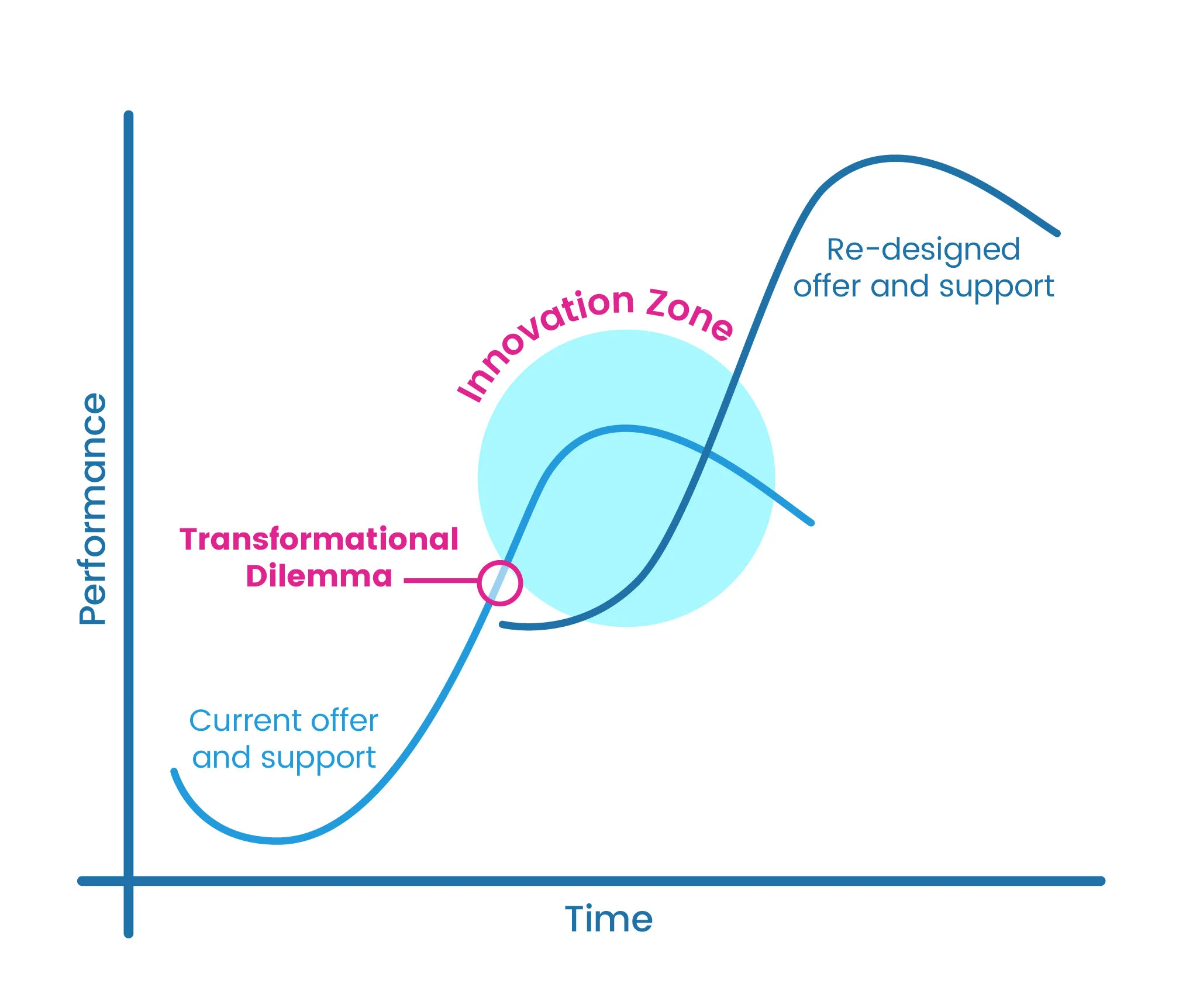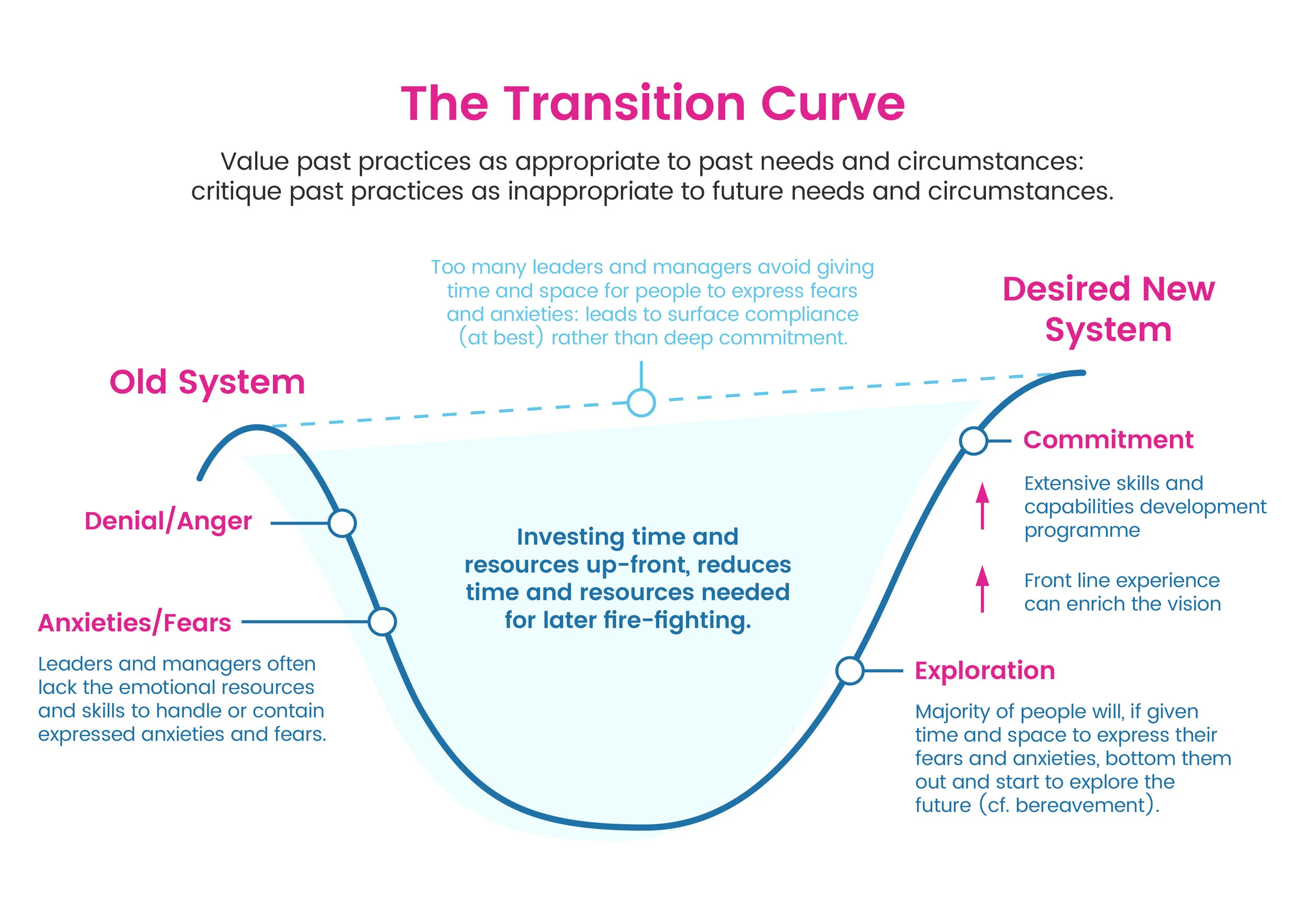Letting go
Supporting professionals to learn and un-learn, and explore what change means for them at their own pace
Seminar 3: Letting go
This module reflects on how innovative organisations and systems can lead and manage change, and what this means for Bermuda’s education system as we embark on our journey towards transformation.
Here you can listen and learn about how leaders can plan for and enable successful change through the seminar link below, or you can read about it beneath and use the questions to reflect on your own personal experiences of change.
Letting go
A summary of the seminar, alongside some personal reflective questions below each graph. If you would like to share your thoughts, please use the Twitter hashtag #LearningFirstBDA!
Reflection 1: What parallel can you draw with education systems around the world? In your view, what changes have started to disrupt its performance? If helpful, think about performance not just in terms of testing outcomes, but whether it is desirable and engaging to children, and whether it is helping them to learn the knowledge and skills they need for a changing world.
Reflection 2: Think of a big change you have experienced at work - successful or unsuccessful! Did you notice these prerequisites in action? What impact did they make - or what impact could they have made to get a more successful outcome?
Reflection 3: Based on what you have learned so far about Learning First, what are some of your worries, anxieties or curiosities about the change process, or the new system we will co-design? What do you think would help you to move to a more exploratory mindset about the new possibilities it might open up for you?
The transformational dilemma
Organisations and systems follow a similar pattern of performance over time. Shortly after starting out, many will experience a dip in performance as they adapt to the word around them and the behaviours of their users or customers. Over time, they benefit from internal and external changes that make their work become easier, cheaper and more desirable to their audience, and their performance rises. However, there is a point at which external changes become so significant that alternatives begin to spring up, displacing the incumbent organisation or system as they embark on their own upwards trajectory.
In the seminar slides above, we reflect on how this looked when the car overtook horse and cart as the dominant form of transport. At first, cars didn’t seem that feasible: although they technically went faster, there were no maintained roads, no way to easily refuel and the machinery was prohibitively expensive. At that pink circled point on the innovation zone diagram above, horse and cart was technically the better option. However over time, these external factors change as investment is pooled into building better roads and petrol stations and the price of parts reduces to make cars more affordable.
Early on in this innovation zone, the incumbent system has to make a decision: continue on its current course and risk failure over time, or innovate (sometimes quite radically) to survive and thrive in the new world.
Key prerequisites for leadership of change
For many, change can be daunting. The role of leaders is crucial to help their people to adapt to a different way of working, and often to develop new professional identities along the way. There are four key prerequisites for change that leaderships must attend to if they are to be successful:
A compelling and energising case for change keeps people focused on the ‘why’ of change and prevents change efforts from slipping down the list of priorities.
An ambitious, clear vision, co-developed alongside those who are affected, ensures that everyone is mobilised in the same direction and prevents haphazard efforts that lead to confusion.
A realistic action plan makes the change tangible and offers clarity on the steps that are needed to walk towards the new vision together.
A focus on the capacity and capabilities needed for people to thrive within the new system helps to alleviate anxiety and frustration about change.
The transition curve
Major changes in our life ask us to let go of things we have done and become used to for many years. Psychologists have observed that many people follow a similar pattern when going through changes: first experiencing denial or anger about the change happening, then moving to a sense of anxiety or fear about what change might mean for them in the future. When given the time and space to express how they feel, most people then begin to explore the new opportunities that change presents. With encouragement, vision and practical support, people can start to learn the new skills and capabilities needed to commit to and thrive within the new system - and do so in their own time.
As we embark on our own change in Bermuda, we must enable everyone to express their anxieties and fears about letting go of some of what we have traditionally done for many years. In order for educators to confidently explore a different future, we must design the kinds of professional support that allows them to safely practice new ways of teaching and learning that we know will transform the learning of our young people - at their own pace.




